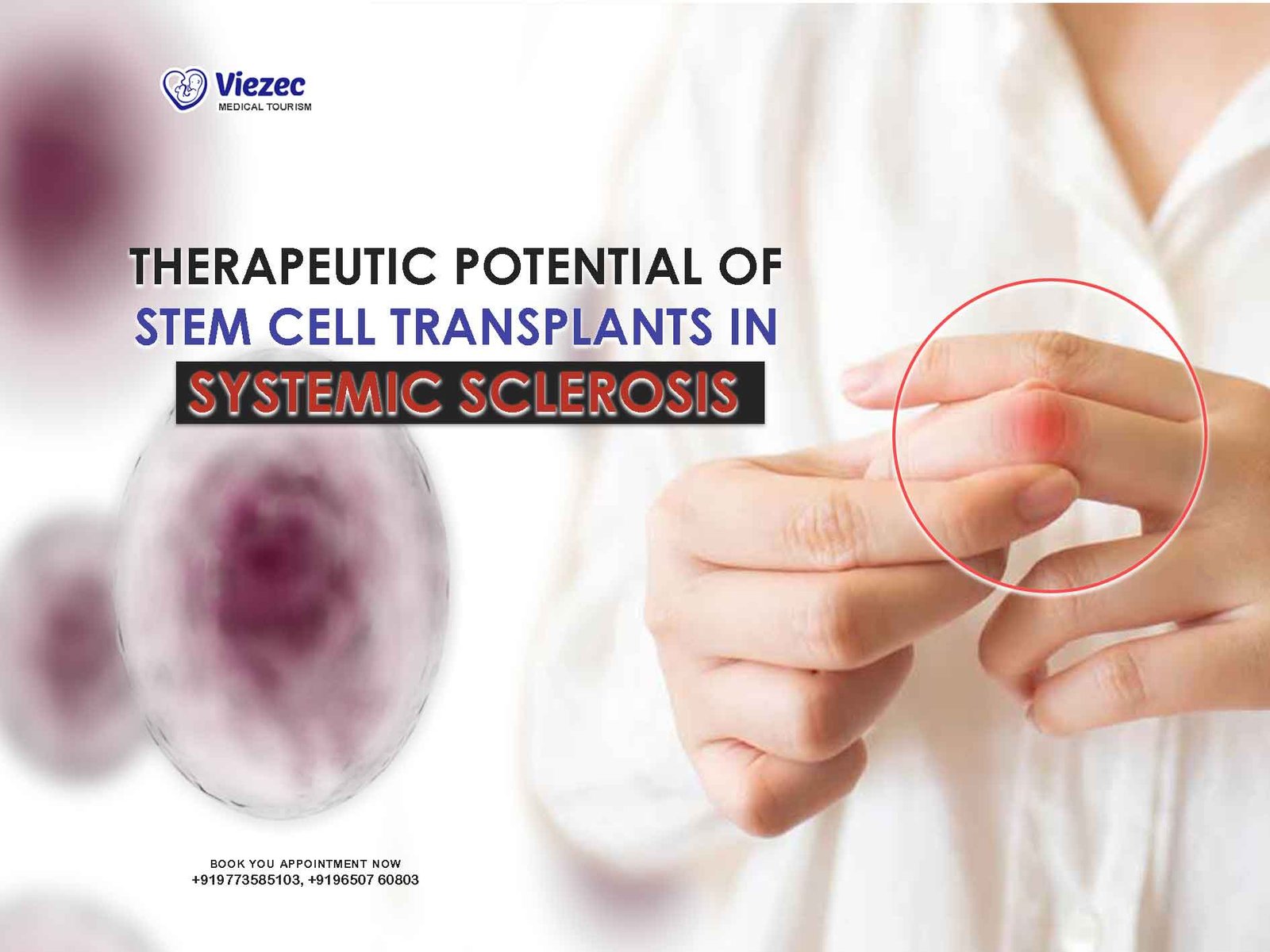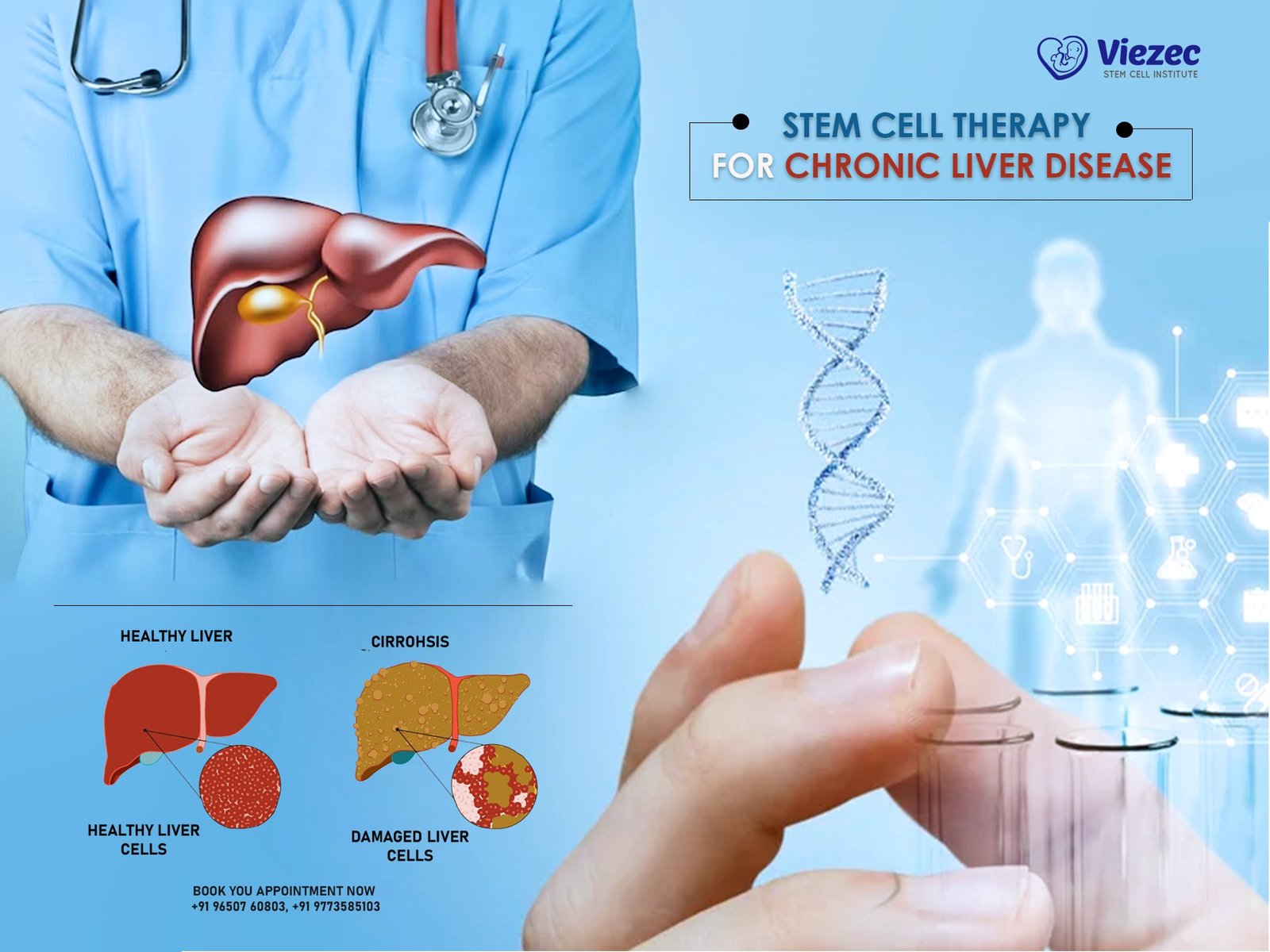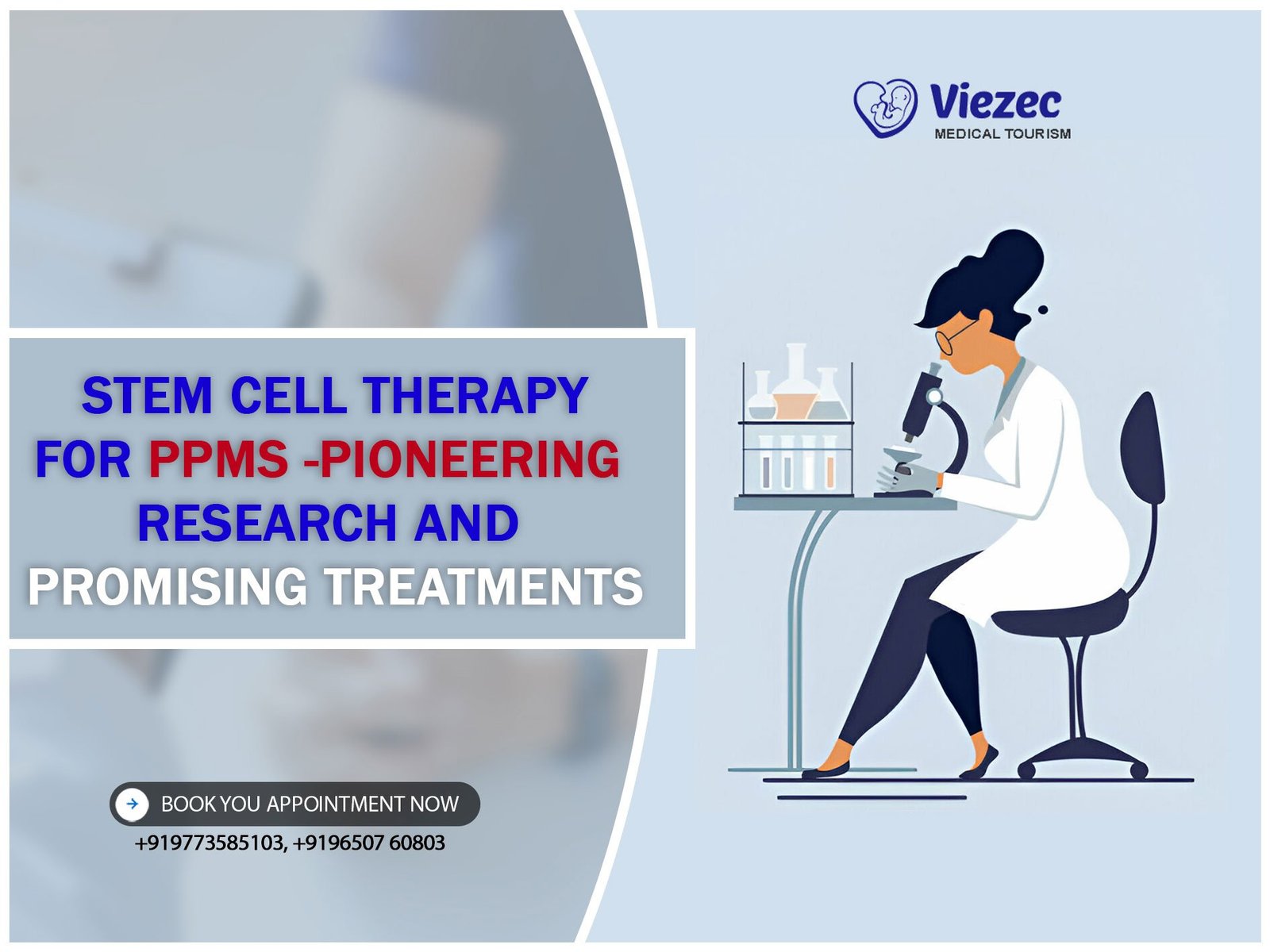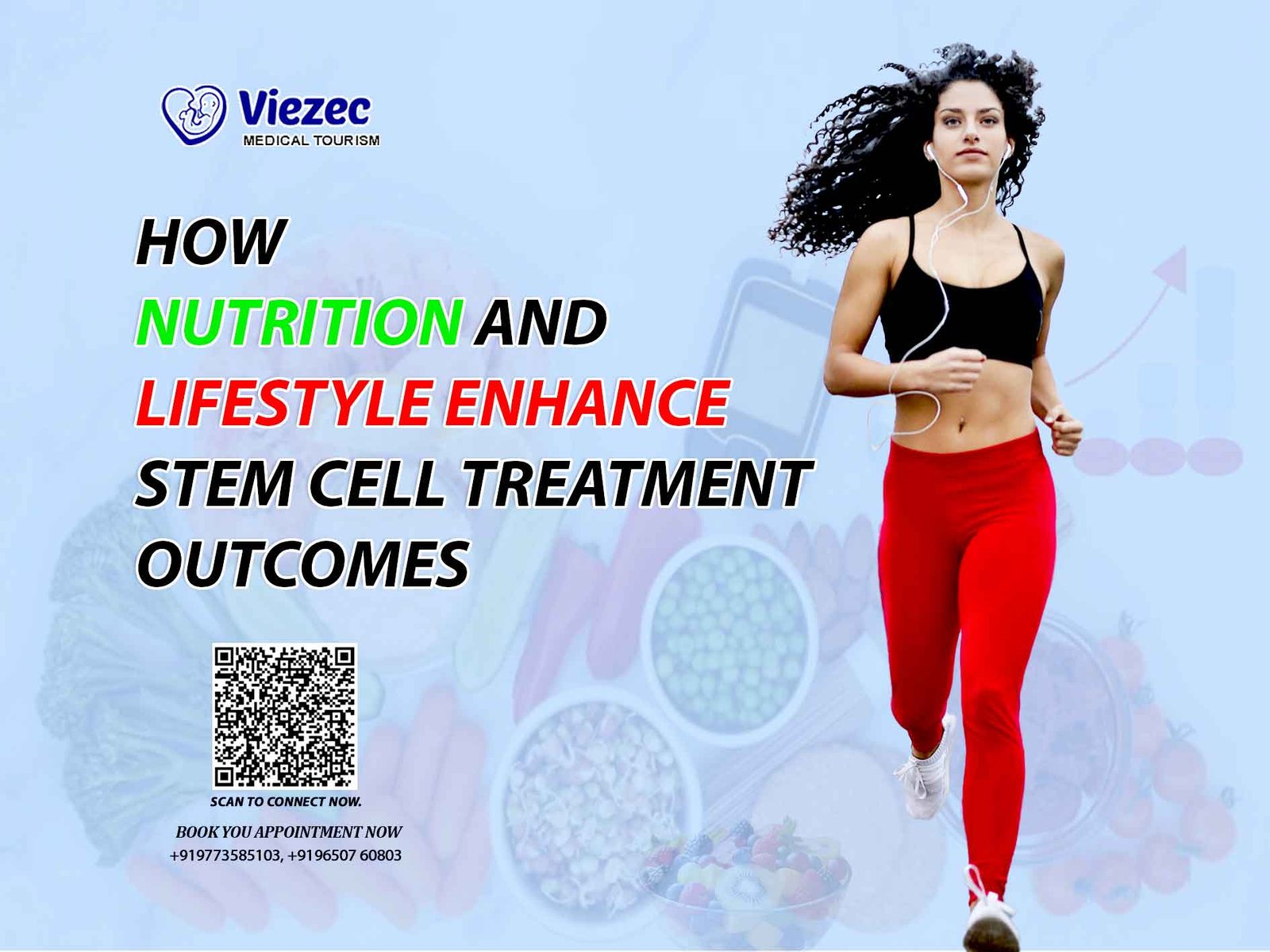Systemic sclerosis (SSc), also known as scleroderma, is a chronic autoimmune disease characterized by fibrosis of the skin and internal organs, vasculopathy, and immune dysregulation. The pathogenesis of SSc involves aberrant activation of immune cells, leading to excessive production of extracellular matrix components such as collagen, resulting in tissue fibrosis. While various treatment options exist, including immunosuppressive therapy and vasodilators, they often provide limited efficacy and fail to halt disease progression in many patients. In recent years, stem cell transplantation has emerged as a promising therapeutic approach for SSc, offering the potential to modulate immune responses, repair damaged tissues, and improve clinical outcomes.
Understanding Systemic Sclerosis
Pathogenesis of Systemic Sclerosis
Systemic sclerosis is a complex autoimmune disorder characterized by vascular abnormalities, immune dysfunction, and fibrosis of the skin and internal organs. The exact cause of SSc remains unclear, but it is believed to involve a combination of genetic predisposition, environmental triggers, and dysregulated immune responses. Endothelial injury, immune cell activation, and excessive collagen production are central to the pathogenesis of the disease.
Clinical Manifestations of Systemic Sclerosis
SSc presents with a wide range of clinical manifestations, including skin thickening, Raynaud’s phenomenon, digital ulcers, joint contractures, pulmonary fibrosis, and gastrointestinal involvement. Disease progression varies widely among patients, with some experiencing a relatively benign course and others developing severe organ complications that significantly impact quality of life and overall prognosis.
Current Treatment Challenges
Limitations of Conventional Therapies
Conventional treatments for SSc primarily focus on managing symptoms and slowing disease progression. Immunosuppressive agents such as corticosteroids, methotrexate, and mycophenolate mofetil are commonly used to reduce inflammation and fibrosis. Vasodilators like calcium channel blockers help alleviate Raynaud’s phenomenon and improve blood flow. However, these treatments often provide only modest benefits and may be associated with significant side effects.
Unmet Clinical Needs
Despite advances in understanding the pathophysiology of SSc, there remains a significant unmet need for effective therapies that can halt or reverse disease progression. Many patients fail to respond adequately to existing treatments, leading to irreversible organ damage and increased morbidity and mortality. There is, therefore, a critical need for novel therapeutic approaches that address the underlying mechanisms driving fibrosis and immune dysregulation in SSc.
Stem Cell Transplantation: A Promising Approach
Rationale for Stem Cell Therapy
Stem cell transplantation offers a novel therapeutic strategy for SSc by targeting the underlying immune dysregulation and promoting tissue repair and regeneration. The rationale for stem cell therapy in SSc is based on the ability of stem cells to modulate immune responses, suppress aberrant inflammation, and differentiate into various cell types involved in tissue repair and regeneration. By harnessing the regenerative potential of stem cells, researchers aim to restore immune homeostasis and mitigate fibrotic processes in affected organs.
Types of Stem Cells Used
Several types of stem cells have been investigated for their therapeutic potential in SSc, including mesenchymal stem cells (MSCs), hematopoietic stem cells (HSCs), and induced pluripotent stem cells (iPSCs). MSCs, derived from various sources such as bone marrow, adipose tissue, and umbilical cord blood, possess immunomodulatory properties and can differentiate into mesodermal lineages, making them attractive candidates for SSc therapy. HSCs, obtained from bone marrow or peripheral blood, have the capacity to reconstitute the hematopoietic system and regulate immune responses. iPSCs, generated by reprogramming somatic cells, offer the advantage of patient-specific therapy and potential for unlimited expansion and differentiation.
Mechanisms of Action
The therapeutic effects of stem cell transplantation in SSc are mediated through multiple mechanisms, including:
- Immunomodulation: Stem cells suppress aberrant immune responses by inhibiting pro-inflammatory cytokine production, promoting regulatory T cell expansion, and modulating dendritic cell function.
- Anti-fibrotic effects: Stem cells attenuate fibrosis by secreting anti-fibrotic factors, such as matrix metalloproteinases (MMPs) and tissue inhibitors of metalloproteinases (TIMPs), and promoting the clearance of fibrotic tissue.
- Tissue repair and regeneration: Stem cells differentiate into various cell types, including fibroblasts, endothelial cells, and pericytes, contributing to tissue repair and regeneration in damaged organs.
Clinical Evidence
Clinical trials investigating the efficacy of stem cell transplantation in SSc have shown promising results, with improvements observed in skin fibrosis, pulmonary function, and quality of life. Autologous hematopoietic stem cell transplantation (AHSCT), in particular, has demonstrated significant benefits in patients with severe SSc who have failed conventional therapy. AHSCT involves the collection of HSCs from the patient’s bone marrow or peripheral blood, followed by high-dose chemotherapy to deplete autoreactive immune cells and reinfusion of the harvested stem cells to restore immune tolerance.
Challenges and Future Directions
Safety Concerns
Despite the promising results of stem cell transplantation in SSc, several challenges remain, including concerns regarding safety and long-term efficacy. High-dose immunosuppressive therapy carries risks of infection, organ toxicity, and potential for malignancy. Strategies to minimize treatment-related complications while maximizing therapeutic benefits are needed to ensure the safe and effective implementation of stem cell transplantation in clinical practice.
Patient Selection
Optimal patient selection is crucial for the success of stem cell transplantation in SSc. Identification of patients who are most likely to benefit from this treatment modality requires careful consideration of disease severity, extent of organ involvement, comorbidities, and risk of treatment-related complications. Biomarkers predictive of treatment response and disease progression may aid in stratifying patients for personalized therapy and improving clinical outcomes.
Future Directions
Continued research efforts are needed to further elucidate the mechanisms underlying the therapeutic effects of stem cell transplantation in SSc and optimize treatment protocols for enhanced efficacy and safety. Advances in stem cell biology, including the development of novel cell sources, optimization of culture conditions, and genetic engineering techniques, hold promise for overcoming current limitations and expanding the therapeutic potential of stem cell-based therapies in SSc and other autoimmune diseases.
Make a Decision
Stem cell transplantation represents a promising therapeutic approach for systemic sclerosis, offering the potential to modulate immune dysregulation, attenuate fibrosis, and promote tissue repair and regeneration. Clinical trials have demonstrated the efficacy of autologous hematopoietic stem cell transplantation in improving clinical outcomes and halting disease progression in patients with severe SSc. Despite challenges and safety concerns, ongoing research efforts hold promise for advancing stem cell-based therapies and transforming the treatment landscape for SSc and other autoimmune diseases. Continued collaboration between basic scientists, clinicians, and industry partners is essential for translating stem cell research into effective therapies that improve the lives of patients with systemic sclerosis.








